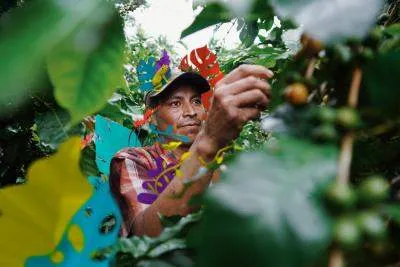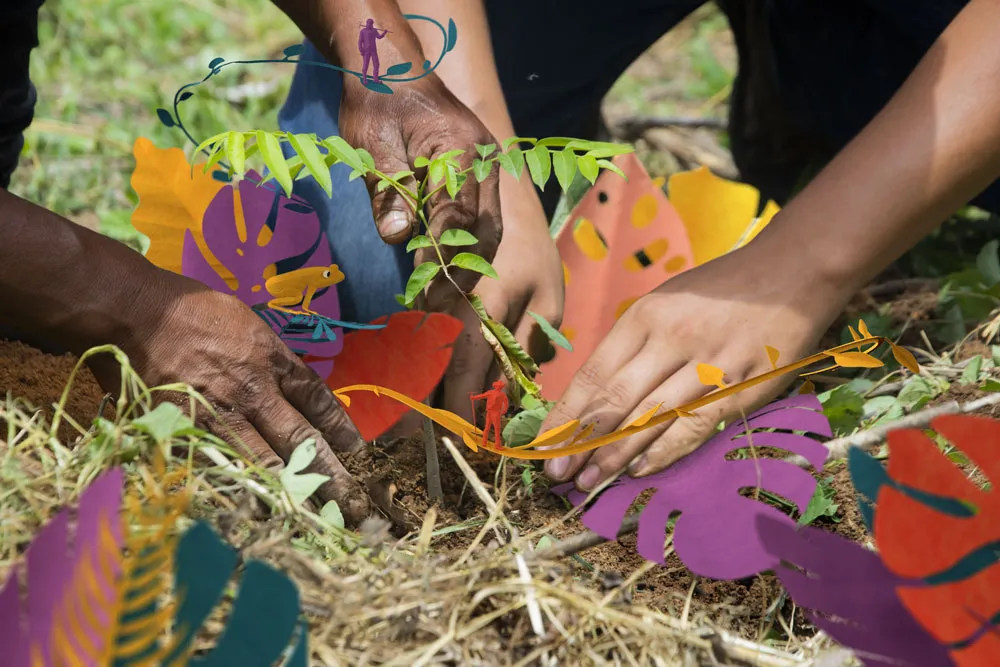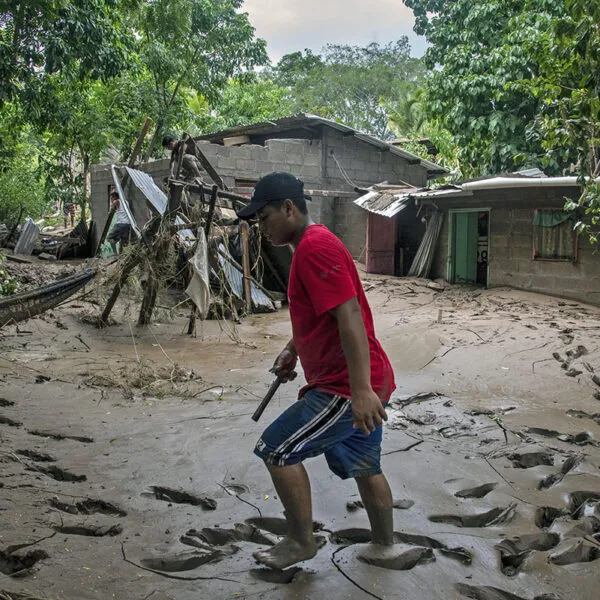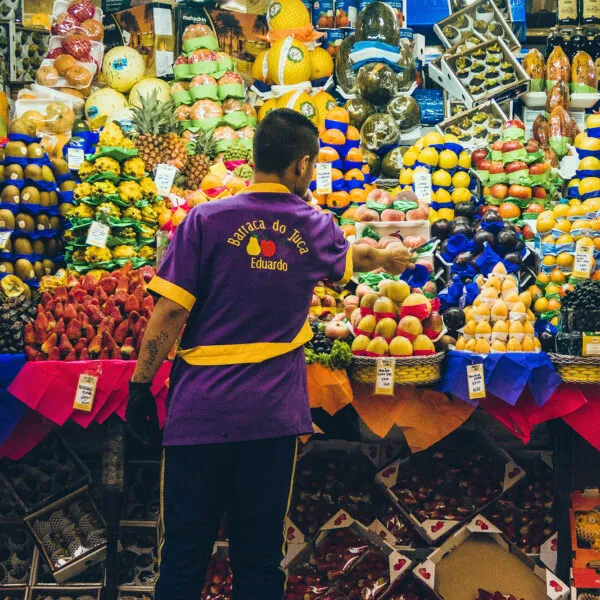If we hope to slow the climate crisis, we have to remake our world. Limiting global heating to 1.5 C degrees—the threshold for what scientists call “multiple system collapse”—means transforming our systems of food production, land management, energy industries, transportation, international trade, and our very culture of consumption.
Given how huge—and urgent—this imperative is, it’s easy to see why eco-anxiety is at an all-time high (especially among young people, for whom the stakes are unimaginable). As those on the front lines of our climate crisis know well, the best antidote to anxiety is action. But when it comes to something as enormous and complex as climate change, it can be difficult to know where to focus. Do individual lifestyle changes really make a difference, or do governments and companies hold all the power?
Luckily, many climate solutions offer multiple entry points ranging from individual actions to the kind of broader, policy-related actions that can catalyze change across an entire sector. Even better, collective action—one of the most joyful ways to tackle eco-anxiety—is key to many of the efforts listed in Project Drawdown’s solutions library. Here are five climate solutions that we hope will inspire you to get involved at the individual, collective, and global level.
Together, we’re building a future where people and nature thrive. Sign up today and join our movement.
"*" indicates required fields
Reducing food waste
This one has been in Project Drawdown’s top 5 for the last several years, because food waste is one of the world’s biggest sources of carbon emissions. It’s also an issue that demands a wide range of responses, including individual, collective, and global.
Individual: Start by buying less food and shopping more frequently, if possible. If your schedule doesn’t permit that, you can prevent food waste by choosing fruits and veggies that freeze well. Chop most of your produce haul when you get home and freeze it. Added bonus: this also cuts down on meal prep time.
Collective: Find and support your local community compost center by bringing food scraps, volunteering, and/or donating.
Global: In some countries, as much as 40% of food waste occurs in the supply chain itself. This is a terrible problem with straightforward solutions. Do some research on legislative initiatives to reduce food waste in your country and write to your government representatives in support of these policies.
Plant-rich diets

Eating a mostly plant-based diet is another solution that regularly appears in Project Drawdown’s top 5. Going plant-based (or mostly plant-based) is one of the most impactful actions you can take as an individual, and it’s also an approach that has huge potential if the masses follow suit.
Individual: Gradually reduce your meat consumption while increasing protein-rich foods like beans, nuts, and whole grains. If you do consume meat, think of it as an embellishment to the meal rather than the main course (added bonus: your health will likely improve dramatically too). Choose Rainforest Alliance Certified products (when you can’t buy local), which use ingredients sourced from farms that are required to conserve—and in the case of large farms, restore––native forests.
Collective: If you live in a country where heavy meat consumption is part of the culture, consider taking on the role of ambassador for a plant-rich diet. Start by hosting small dinner gatherings to showcase your most delicious plant-based dishes. Ask your favorite restaurants for plant-based offerings. If you happen to know any chefs, invite them to join you in seducing your friends away from heavy meat consumption through the pleasure of taste.
Global: In some countries, government subsidies to the meat and dairy industries keep the cost of meat and dairy products artificially low and obscure the ecosystem and human costs of heavy meat production. If you live in such a country, contact your local government representatives and urge them to oppose these subsidies.
Bolstering the position of girls and women
Project Drawdown says that expanding education for girls and increasing access to family planning could lead to reductions as high as 85.4 gigatons of carbon dioxide by 2050. Education helps women respond better to climate shocks. And giving women the knowledge and tools they need for reproductive control has a multitude of benefits for the planet.
Individual: Volunteer for and support mentoring and tutoring programs in your area aimed at keeping girls in school. If you have science skills, share them: Only 30 percent of the world’s researchers are women.
Collective: Get involved at a district level to strengthen educational initiatives targeting girls. Support STEM programs for girls and organizations that promote women’s reproductive knowledge and access to healthcare.
Global: While developing regions have achieved or are close to achieving gender parity at the primary school level, disparities widen in secondary and tertiary education, particularly in sub-Saharan Africa, Oceania, and South and West Asia. Not surprisingly, some of the deepest discrepancies exist in the poorest countries. Globally, you can support organizations, including the Rainforest Alliance, that work to ensure access to education in rural areas.
Tropical forest protection and restoration
There are many reasons to protect and restore forests, not least of all because they sequester carbon. Project Drawdown estimates that protecting currently degraded land and allowing natural growth of tropical forests to occur on 161-231 million hectares would sequester 54.5 to 85.1 gigatons of carbon dioxide by 2050.
Individual: Choose Rainforest Alliance Certified products, for those essentials you can’t buy locally, such as coffee, bananas, tea, and chocolate. Products bearing our green frog seal are sourced from farms that use responsible methods to maximize yield on existing cropland.
Collective: You can amplify your individual impact by supporting our work to train farming and forest communities in sustainable land management, agroforestry, and reforestation.
Global: Support Indigenous and local land rights around the world. Not only is this the right thing to do, it is better for climate: Numerous studies show that Indigenous people are the most effective forest guardians, and we need their leadership now more than ever.
Agroforestry

Some crops, like coffee and cocoa, grow beautifully under the shade of larger trees. According to Project Drawdown, an acre of agroforestry can achieve carbon sequestration rates comparable to those of afforestation and forest restoration, with the added benefit of producing food.
Individual: Choose shade-grown coffee (preferably Rainforest Alliance Certified) at the supermarket. There are also some herbs that grow well in shade, so don’t hesitate to plant beneath trees in your home garden. The more greenery you create, the more carbon you help pull from the atmosphere.
Collective: Encourage your favorite coffee vendors and cafes to offer only shade-grown coffee. That way your local community of coffee-lovers can support agroforestry, too, without even trying.
Global: Support organizations that promote coffee and cocoa agroforestry through training and certification, including the Rainforest Alliance.




